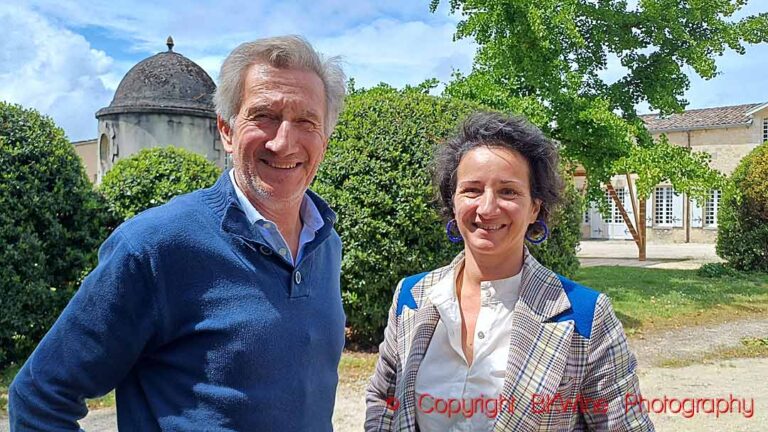Bastien Jolivet is young winegrower in the Northern Rhône Valley. In 2014 he decided to start to make his own wine. He took the family vineyards out of the local cooperative and presented his own first vintage the same year. An adventure, for sure, and not an easy decision because it involves quite a lot of investments. Being a grape grower and being a wine producer are two different things.
Wine cooperatives still produce an important part of French wines, around half of the country’s production. But every year a number of young and talented persons decide to leave their cooperative and instead make everything themselves: work the vineyard, make the wine, sell the wine, etc. Yes, says Bastien, investments can be huge. For this reason, he shares some machinery and also pickers for the harvest with a wine producer friend.
This article was originally published in a shorter version on Forbes.com.
Bastien’s winery and vineyards are in the small village of Saint-Jean de Muzols in the appellation of Saint-Joseph on the right bank of the River Rhône. The Saint Joseph appellation was created in 1956 by six villages. At the time it was only 90 hectares. In 1969 it expanded and now the appellation covers almost 1200 ha on a narrow strip from Condrieu down to Cornas. The neighbours across the river from Bastien’s winery are world famous Hermitage and Crozes-Hermitage.
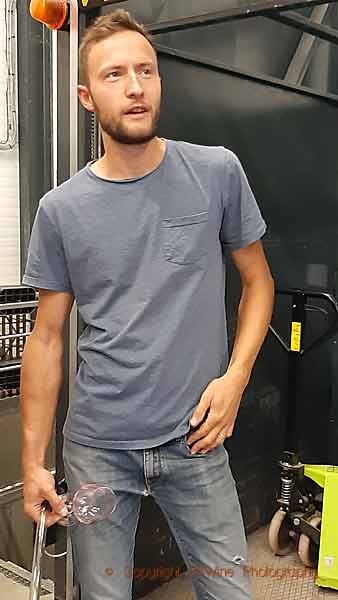
Saint Joseph is mostly red wines made from Syrah. Only 10 % is white from Marsanne and Roussanne. The soil is mainly granite. If you like Syrah this is a region to be on the lookout for. The wines here are often a bit less powerful and more on the fruity side compared to Crozes-Hermitage. Saint-Joseph is often good value for money.
Before taking over the family vineyards Bastien spent time working in wineries in South Africa and New Zealand. It was a good experience, he says. He adds though that he is more influenced by the French way of doing things.
I met Bastien at harvest time in 2019. He was just about to start picking and he was very happy with the quality. The spring and the growing season started late, he tells me, but from the end of June, it was very warm. “It was even warmer further south, but here, it was still fresh, the sun doesn’t burn our grapes.”
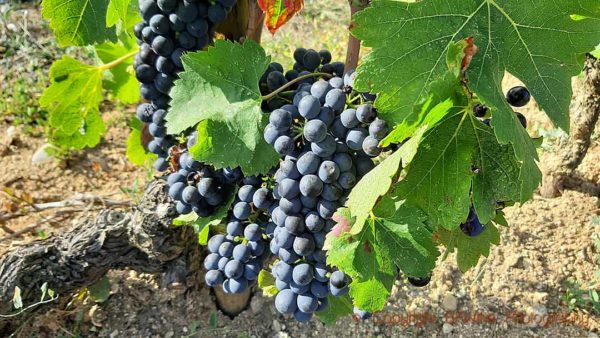
He has around 10 hectares. Syrah mostly and some of the vines are old, the oldest are 75 years. He also has some white grapes, mainly Marsanne. He works towards being organic but don’t know if he will be certified. On 7 hectares he has no problems. 3 hectares, however, are on steep slopes and that makes weed control less easy. “I am careful though with the spraying”, he says.
All the different plots are picked and vinified separately. Blending is done at bottling. Having different plots is interesting as they all bring something special to the blend. They can differ in style but, at least for the moment, he prefers to blend. His aim is to stress the fruit and balance.
Most of his vineyards are in the Saint Joseph appellation but he points up the hill to where his highest block is situated, at 350-meter altitude. Those vineyards are 100 meters outside of the AOP limit. But it is still prime land for the vines. “It is cooler there so it is easier to keep the acidity”, he says. Another good thing up there is the wind that keeps the vines dry and healthy.
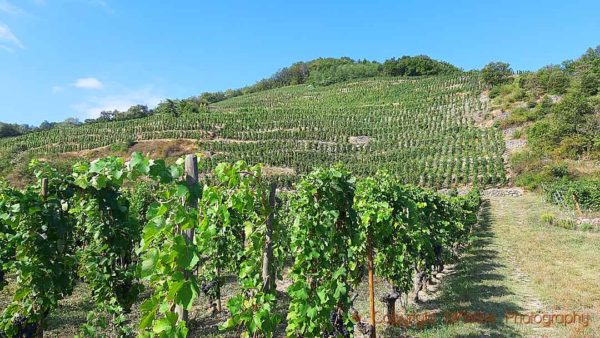
His wines are superb. I tasted vintages 2018 and 2017.
Domaine Jolivet Cuvée de Louis Blanc 2018: This wine comes from the top of the hill, so outside of the appellation, and is made from 40% viognier, 20% marsanne and 40% roussanne. The marsanne vines are actually planted on Saint Joseph AOP land but Bastien thinks they are too young to enter into his Saint Joseph.
This is a very pleasant, floral and easy drinking style and this is exactly what he wants with this wine. There are also some notes of nuts from Marsanne coming through. The north-facing Viognier grapes give an aromatic touch. These vines actually come from cuttings taken in Condrieu, the land of excellence for Viognier. “Viognier can be quite a dominant character in a wine”, says Bastien. Here the floral aromas from Viognier are nice and balanced. (~15 euro)
Domaine Jolivet Clef de Sol 2018, Saint Joseph Blanc spends one year in 225-litre oak barrels but only 8% of them is new oak. Ageing in oak gives an oxidative style so this is very different from the first wine. It is delicious and refreshing, quite round, rich and stylish, with some honey notes. A slight bitterness at the end which adds to the complexity. (~25 euro)
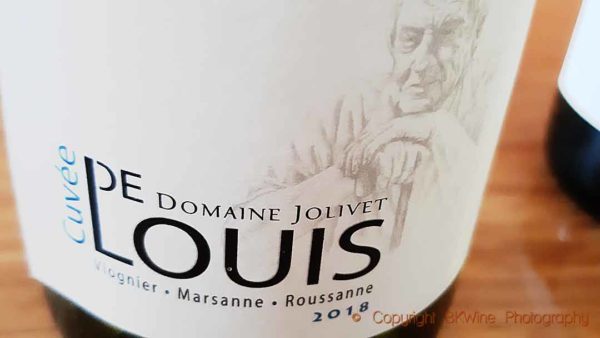
Back again on the top of the hill with the red Domaine Jolivet Cuvée de Louis 2018. Here Bastien uses his young vines of Syrah. They are all destemmed and only get a short maceration, 10-15 days. Easy drinking style with no oak and light extraction, but still structured and with some of the typical Syrah aromas of violets and black pepper. A lovely fruity and juicy style of Syrah. (~15 euro)
Domaine Jolivet Saint Joseph L’Instinct 2017 is a blend of nine different plots with vines of different ages. He uses 40% of the stems to give complexity and acidity, but only ripe vintages though. “In the old days”, he tells me, “people didn’t have destemmers and also, they picked their grapes less ripe. The wines were undrinkable the first years”. (~25 euro)
This is definitely the opposite. It is very drinkable. Spicy, intense, peppery, aromas of black currant, well balanced. It has been aged in 600-litre barrels.
We finished the tasting with a barrel sample of the oldest syrah grapes, so 75 years old, from a single vineyard. He is very happy with this wine and maybe he will bottle it separately. It has a big concentration and a lovely freshness. From these old vines he only gets 2 or 3 bunches per vine, hence the concentration.
At the moment Bastien exports 30-40% of his production but it will probably be more in the future. Although selling wine can be as hard as making wine, the high quality and personal style of these wines will make it easy.
This article was originally published in a shorter version on Forbes.com.
Travel: Travel on a wine tour to the Rhone Valley with us.





